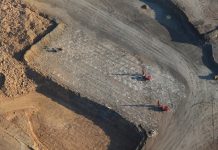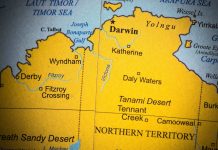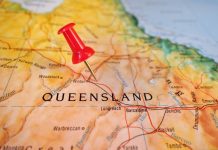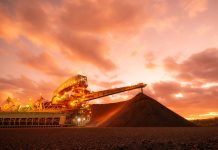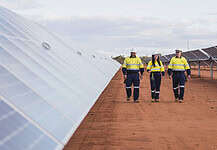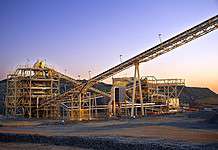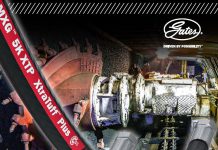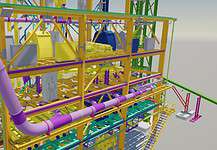By Mark Scott
March 2015

WHEN Broken Hill became Australia’s first nationally heritage listed city, mayor Wincen Cuy spoke of the town’s “ever-present history” of mining and workers’ struggles.
Throughout the nineteenth and twentieth centuries, Broken Hill was synonymous with Australia’s mineral riches and the country’s fighter for workers’ rights; often the two went hand-in-hand.
As the namesake and birthplace of the world’s largest mining company, and the site of some of Australia’s most fierce industrial battles, the NSW town’s elevation to National Heritage status rightfully stakes its place in Australia’s history.
The Broken Hill area, more than 1000km west of Sydney, was solely inhabited by the Wiljakali people until the 1840s, when European explorers first visited the area and named the Barrier Range.
Pastoralists soon followed, staking out sheep stations across the region.
In 1883, German-born Charles Rasp was working on Mount Gipps station – which straddled the Barrier Range – as a boundary rider, earning a salary of 1 British pound per week.
Despite no experience in prospecting or geology, one hill on the station struck Mr Rasp as unusual; he was convinced the formation, named Broken Hill for its rugged outcrops, held deposits of tin.
After silver was discovered at a site 25km from Broken Hill, Mr Rasp pegged out a mineral lease block at the site. Station manager George McCulloch followed suit and, concerned his property would be overrun with prospectors, convinced five other station workers to peg out blocks, totalling about 300 acres.
The ‘Syndicate of Seven’, as they came to be known, formed the Broken Hill Company, each claiming one of seven shares in the private venture.
The hill was tested for minerals and initial results showed large quantities of lead and tin but low assays of silver.
Determined to see some wealth from their claim, the syndicate split their shares in half a bid to gain outside capital; some original members sold out, and in the 12 months following Mr Rasp’s initial claim, the one-fourteenth shares sold for as little as 30 British pounds.
In 1884, Mr Rasp’s theory came true and vast quantities of silver chloride were found at the claims. The value of the Broken Hill shares soared – the boundary-rider-turned-prospector told the South Australian Register in 1886 that within three months of the results arriving, syndicate shares were asking 9000 British pounds each.
By 1885 the remaining members of the syndicate agreed to a public float of the company to build the capital necessary to take full advantage of Broken Hill’s mineral wealth.
On 13 August the Broken Hill Proprietary Company – colloquially known as BHP – was incorporated, and a year later Mr Rasp told the Register “200 years [wouldn’t] see the ore out of the claim”.

Broken Hill booms
Mining was soon underway at Broken Hill, uncovering previously unimaginable riches.
By 1891 the mine had produced “millions of pounds worth of silver”, according to an article in The Australian Town & Country Journal, and was “perhaps the most notable the world [had] known” and the “effect of its discovery upon the destinies of Australia [was] incalculable”.
Around Broken Hill, the effect was more tangible – by 1888, just three years after BHP was floated, 10,000 people were estimated to have flocked to the town that sprung up near the mine.
Melbourne’s The Argus’ mining correspondent described his return to the region that year after two years away.
“Within that short period a population has covered the waste as if by magic…here there are 10,000 people, broad streets, with the buildings as closely packed in places as the most crowded part of [Melbourne’s] Bourke Street, a couple of score of hotels, some of them as large as any of the most important in our provincial towns, two theatres, three well conducted daily newspapers, a railway almost into the heart of the town, with hansoms and wagonettes as other means of locomotion,” he wrote.
“What a change from two years and a half ago, when the journey over the seemingly interminable saltbush plains by coach, enveloped in clouds of red dust for hours together, was a task only to be undertaken under compulsion.”
Steam trams were introduced in 1906 and the following year Broken Hill was officially declared both a city and NSW’s second largest settlement, all on the back of BHP and other miners’ works at what was known as the ‘Line of Lode’.

Decades of strikes
However the riches earned on diggings at Broken Hill came with a sizeable risk and the iconic Miners’ Memorial towering over the town nowadays stands as a tribute to the more than 800 workers who died on the mines.
Poor working conditions were a hallmark of the early days at Broken Hill and gave birth to one of Australia’s strongest trade union movements.
Broken Hill’s first major strike lasted 16 weeks in 1892 as about 5000 workers walked out following BHP and other mining companies’ attempts to reduce costs through the use of contract labour.
Picket lines were set as BHP brought workers from other parts of the colony to Broken Hill but the strike fell apart after leaders were charged with inciting violence; its failure led to a decrease in wages across the mines.
The wages issue arose again in 1908, when BHP declared it would pay its workers less than the minimum wage due to a decline in mineral prices.
Unionists took the case to the Federal Arbitration Court in 1909 and BHP responded by locking out union workers, hiring free labourers in their place.
Again, the strikers set pick lines around the mine and violent clashes soon broke out between ‘scabs’ – free labour – and unionists; union members made effigies and mock graves for scab workers as a method of intimidation.
This time the victory was for the unionists. In his judgement, Federal Arbitration Court Justice Henry Higgins ruled in favour of the workers’ right to a higher minimum wage.
“I face the possibility of the mine remaining closed with all its grave consequences, but the fate of Australia is not dependent on the fate of any one mine, or on any one company, and if it is a calamity that this historical mine should close down it will be a still greater calamity that men should be underfed or degraded,” he said.
The mine was suspended for two years in response.
Broken Hill’s final and longest strike lasted a full 18 months, from May 1919 to November 1920, pushing impoverished striking workers to the brink.
A federal award handed down in 1916 was set to expire in 1919 and dominant Broken Hill unions, led by the Amalgamated Miners Association (AMA), began to push for reduced hours, workers’ compensation schemes and safer conditions.
When mining companies refused their demands, the Broken Hill unions went on strike; while smaller unions capitulated throughout later 1919 and early 1920, the AMA held out, with its members and their families surviving on rations of potatoes and onions for months on end.
The impact on workers’ families’ health was enormous – malnutrition saw infant deaths rose from 99 per 1000 births in 1918 to 147 per 1000 in 1919.
However, when the ‘Big Strike’ ended in 1920, the AMA claimed victory, winning the first 35-hour week in Australian history, through the abolition of Saturday shifts; extracting a promise of full compensation for work-related injuries; seeing ventilation installed in underground mine shafts for the first time; and forming the Barrier Industrial Council, Broken Hill’s peak union body that still exists today.
In 1939 BHP finally closed its operation at Broken Hill after mining an estimated 180 million British pounds worth of minerals from the site, and using the revenue earned to expand its presence nationwide and claim a place as one of Australia’s wealthiest companies.
However the exit of the original mining company did not signal the end of the industry for the town; other miners rapidly moved in and, more than 130 years after it was discovered, the mineral resource at Broken Hill still sustains mining and supports the town built to mine it.

